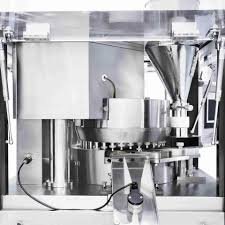SOP for Cleaning of Tablet Compression Machine

Standard Operating Procedure (SOP)
Here is a complete Standard Operating Procedure (SOP) for Cleaning of a Tablet Compression Machine, commonly used in pharmaceutical production environments to ensure hygiene, prevent cross-contamination, and comply with GMP.
1. Objective
To lay down the procedure for proper and consistent cleaning of the tablet compression machine to ensure cleanliness and prevent cross-contamination.
2. Scope
Applicable to all tablet compression machines used in the production department for the manufacture of oral solid dosage forms.
3. Responsibility
-
Machine Operator: Perform cleaning as per this SOP.
-
Production Supervisor: Ensure cleaning is done and documented properly.
-
QA Personnel: Verify and approve post-cleaning condition of the machine.
4. Materials and Equipment Required
-
Purified water
-
Approved cleaning agent (detergent)
-
Soft nylon brushes
-
Lint-free cloths
-
Clean dry air supply
-
PPE (gloves, goggles, apron, face mask)
-
Vacuum cleaner (if required)
-
Cleaning checklist/logbook
5. Procedure
5.1 Pre-Cleaning Activities
-
Ensure the machine is switched off and power supply disconnected.
-
Display “UNDER CLEANING” status board.
-
Wear appropriate PPE.
-
Remove any leftover tablets, granules, or powder from the hopper and die table.
5.2 Cleaning Procedure (Product-to-Product or Batch Changeover Cleaning)
-
Dismantle Machine Parts:
-
Remove feeding hopper, turret cover, dust extraction pipes, scrapers, punches, and dies.
-
Handle tooling carefully to avoid damage.
-
-
Dry Cleaning (if applicable):
-
Use a vacuum or brush to remove powder residues.
-
-
Wet Cleaning:
-
Wash parts with approved detergent and purified water.
-
Use soft brushes to clean crevices and hard-to-reach areas.
-
Rinse thoroughly with purified water.
-
-
Cleaning the Main Machine Body:
-
Wipe the turret, guards, and external surfaces with a damp cloth using purified water.
-
Do not use excessive water on electrical or motor components.
-
-
Drying:
-
Use clean dry lint-free cloths and/or filtered compressed air to dry parts completely.
-
Ensure no moisture is retained on any part.
-
-
Visual Inspection:
-
Check for any residue, stains, or contamination visually.
-
Re-clean if needed.
-
-
Reassembly:
-
Reassemble the cleaned and dried parts.
-
Ensure proper fitment and function.
-
6. Post-Cleaning Activities
-
Affix a “CLEANED” status label on the machine.
-
Enter the details in the Equipment Cleaning Log.
-
Inform QA for line clearance before the next use.
7. Precautions
-
Avoid using metal brushes or abrasive materials.
-
Ensure all detergent is rinsed off thoroughly.
-
Do not allow water to contact electrical components.
-
Handle punches and dies with care.
8. References
-
Equipment Operation Manual
-
Cleaning Validation Protocol
-
cGMP Guidelines
🎓 Discover one of the best Pharmaceutical Production courses available — click below to explore the course that’s shaping future Production skills.

